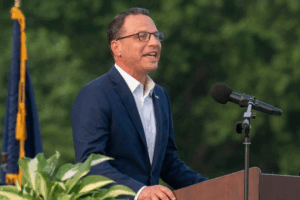Breaking down the voting groups that will decide who Pennsylvania votes for this fall.
Pennsylvania is considered the big prize in this fall’s presidential election. Among a handful of swing states, Pennsylvania has consistently been among the closest. It also has the most electoral votes, crucial to both former President Donald Trump and Vice President Kamala Harris in their quest for 270 electoral votes and the White House.
A variety of demographics and voting blocs making up Pennsylvania’s likely voters are diverging. Some are following national movements while others are trending away from their traditional political affiliations.
Rural Voters
Voters outside major metropolitan areas in the Keystone state have trended more towards Republicans. Dominated by voters without college degrees, these regions have been trending toward the GOP for a while. But Trump’s arrival in 2016 sped up that process.
Non-White Urban Voters
Some may consider non-white urban voters the exact opposite of Caucasian rural Pennsylvanians. But in terms of voting trends, both are moving towards Republicans. While rural voters are aging and simply becoming more Republican, non-white urban voters skew younger and shifting from very Democratic to slightly less Democratic in their voting preferences.
However, the proportions are important. According to data published the Philadelphia Inquirer, while Biden gained 95,000 more votes in rural areas compared to Hillary Clinton in 2016, Trump also gained voters. Nearly twice what Democrats did between 2016 and 2020. Among the urban non-white voting bloc, Democrats actually lost more than 8,000 votes from 2016 to 2020. In contrast, Trump picked up more than 20,000 votes among these voters.
Trending Towards Democrats
The Inquirer’s analysis also showed suburban voters, like those in “collar counties” surrounding Philadelphia, leading the shift towards Democrats. Turnout in the 2020 presidential election far exceeded 2016 in this critical voting group and Trump won these voters both times. But Democrats are catching up, closing the gap by more than 105,000 votes.
College educated white voters in urban areas are becoming an unmovable voting bloc for Democrats. While their registration numbers are a little more than a third of suburban voter rolls, the Democratic Party is dominating their election results. Hillary Clinton won 6 out of every 10 voters. Biden improved upon that, picking up an additional 7%. As with suburban voters, turnout was higher and while Trump and the Dem candidates had more votes than in 2016, Biden netted 77,000 more votes than Clinton.
The group with the smallest shift towards Democrats is the white working class in urban areas. Trump moved a massive number of these voters into his camp in 2016, yet that shift was cut in half in 2020, which pushed Biden back over 50% of this group.
Vance, Walz VP Picks Designed to Appeal to PA Voters
Since his selection as Harris’ vice-presidential running mate, coverage of Minnesota Gov. Tim Walz has been an unending stream of headlines and praise about his Midwestern, rural roots, and his “everyman” persona. The former teacher and Congressman, who praised Chinese communism with his students, is expected to appeal to rural areas dominated by agriculture, like he claims to have done in his runs for Minnesota Governor.
Ohio Sen. JD Vance is also leaning into his rural roots, with his acceptance speech at last month’s GOP convention said to have “mirrored” the message of his book “Hillbilly Elegy” which rocketed him into the spotlight a decade ago. The speech was a direct appeal to “all the forgotten communities” in Rust Belt states that Trump won in 2016 but barely lost in 2020.
GOP Closing Statewide Voter Registration Gap
While the state’s demographics can be sliced up any way pollsters choose, the advantage Democrats have had on statewide voter registration since 2008 has shrunk every year and is currently at its lowest. Outside of southeast Pennsylvania, Democratic voter registration is dropping, with rural counties shedding the most Dem voters.





